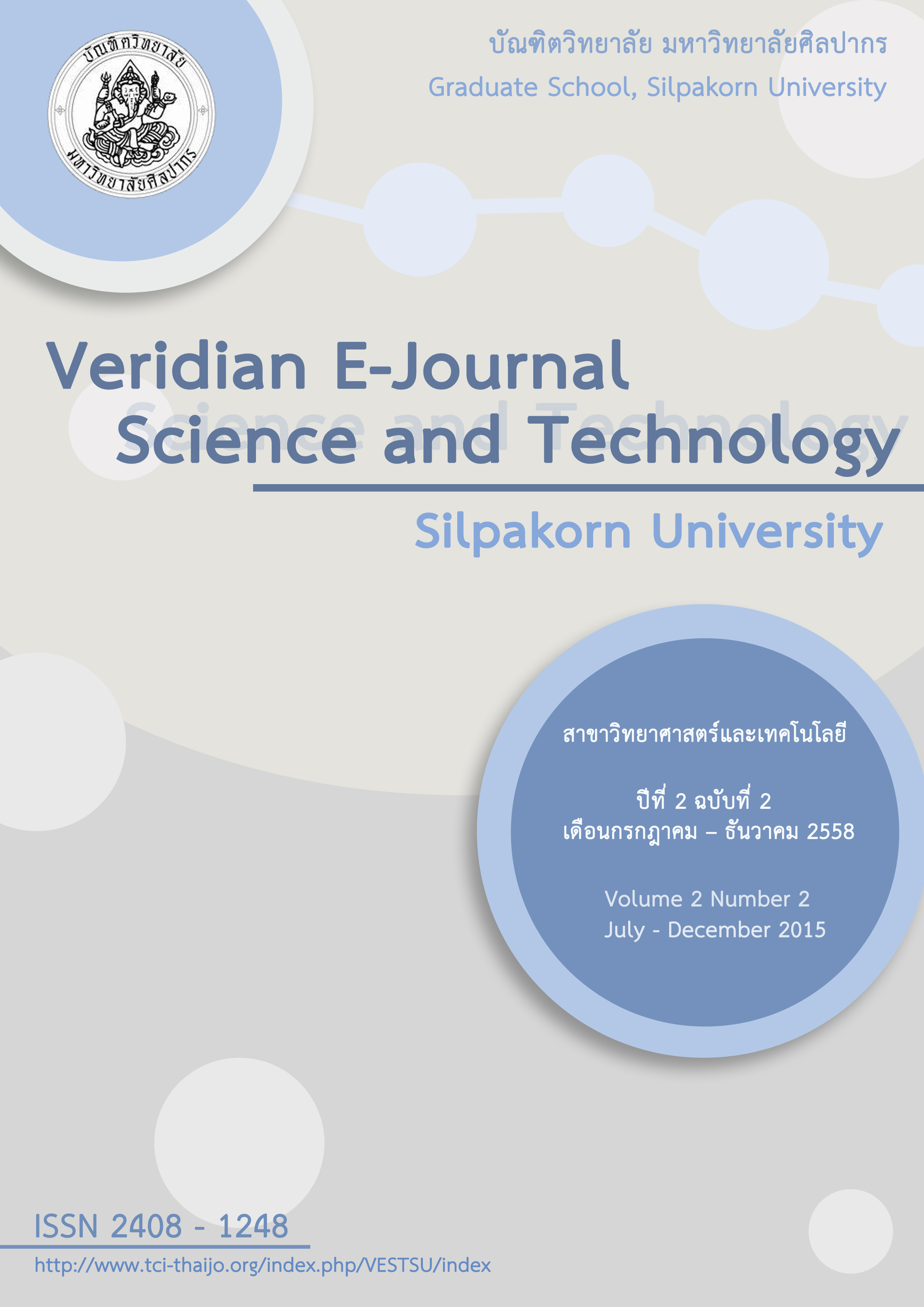ปัจจัยที่สัมพันธ์กับพฤติกรรมตรวจคัดกรองมะเร็งปากมดลูกของสตรีกลุ่มเสี่ยงที่ไม่เคยตรวจคัดกรอง ในช่วง 3 ปีที่ผ่านมา
Main Article Content
Abstract
บทคัดย่อ
การศึกษาเชิงสำรวจแบบตัดขวาง มีวัตถุประสงค์เพื่อศึกษาปัจจัยที่มีความสัมพันธ์กับพฤติกรรมตรวจคัดกรองของสตรีกลุ่มเสี่ยงที่ไม่เคยตรวจคัดกรองในช่วง 3 ปีที่ผ่านมา กลุ่มตัวอย่างคือ สตรีอายุ 30-60 ปีที่ไม่เคยตรวจคัดกรองมะเร็งปากมดลูกติดต่อกันอย่างน้อย 3 ปีที่ผ่านมา และเป็นกลุ่มเป้าหมายในปีงบประมาณ 2556 ในอำเภอหนองมะโมง จังหวัดชัยนาท จำนวน 250 คน เก็บรวบรวมข้อมูลโดยใช้แบบสัมภาษณ์ และวิเคราะห์ความสัมพันธ์ระหว่างปัจจัยที่ศึกษากับพฤติกรรมตรวจคัดกรองมะเร็งปากมดลูก ด้วยสถิติทดสอบไค-สแควร์
ผลการศึกษา มีกลุ่มตัวอย่างเพียงร้อยละ 32.0 เท่านั้นที่ไปตรวจคัดกรองมะเร็งปากมดลูกในปีที่ผ่านมา ปัจจัยที่พบว่ามีความสัมพันธ์กับพฤติกรรมตรวจคัดกรองอย่างมีนัยสำคัญทางสถิติ ดังนี้คือ ปัจจัยลักษณะบุคคล ได้แก่ สถานภาพการสมรส (p=0.011) อาชีพ (p=0.021) การตรวจสุขภาพ (p=0.030) การป่วยเป็นโรคมะเร็งของบุคคลรอบข้าง (p=0.006), ปัจจัยแรงจูงในในการป้องกันโรค ได้แก่ การรับรู้ประสิทธิผลของการตอบสนอง (p<0.001) การรับรู้ความสามารถตนเอง (p<0.001), ปัจจัยเอื้อ/การเข้าถึงบริการ ได้แก่ ระยะทาง (p<0.001), และปัจจัยเสริม ได้แก่ การได้รับแรงสนับสนุนทางสังคมจากอาสาสมัครสาธารณสุข (p=0.003) การรับรู้อิทธิพลจากเพื่อน (p=0.004) ส่วนปัจจัยที่ศึกษาอื่นๆ ไม่พบว่ามีความสัมพันธ์อย่างมีนัยสำคัญ จากผลการศึกษานี้ ควรดำเนินการส่งเสริมการตรวจคัดกรองในกลุ่มสตรีกลุ่มนี้อย่างเข้มข้น โดยเฉพาะกลุ่มสตรีที่โสด/หม้าย/หย่า กิจกรรมดำเนินงานควรเน้นการให้ข้อมูลเกี่ยวกับผลดีของการตรวจคัดกรองมะเร็งปากมดลูกและสร้างความมั่นใจของสตรีที่ขจัดอุปสรรคตามการรับรู้ต่อการตรวจคัดกรองของกลุ่มเป้าหมาย การจัดบริการตรวจคัดกรองเชิงรุกในชุมชน และการใช้กลุ่มอาสาสมัครสาธารณสุขและกลุ่มเพื่อนเพื่อชักชวนให้ตรวจเพิ่มขึ้น
Abstract
This cross-sectional survey research aimed to study the factors related to cervical cancer screening behavior among a group of women at risk who had never been screened within the past 3 years. The samples consisted of 250 women aged 30-60 years who had not been screened within the past 3 consecutive years and were the group targeted in the fiscal year 2013 from Nongmamong District in the Chainat Province. The data were collected by using interviewed questionnaire. Chi-Square test was used to test the relationship between cervical cancer screening behavior and the studied factors.
The results showed 32.0 percent of the samples obtained cervical cancer screening service in the last year. The factors that were found significantly related to cervical cancer screening behavior, included marital status (p=0.011), occupation (p=0.021), health check-up (p=0.030), surrounding persons’ getting cervical cancer (p=0.006), perceived response efficacy (p<0.001), perceived self-efficacy (p<0.001), distance to health care facility (p<0.001, to receive social support from volunteers (p=0.003) and perceived peer influence (p=0.004). There were no significant relationships between cervical cancer screening behavior and the other study factors. The results suggest that intensive promoting intervention should be done for these groups of women, especially the single/ widowed/divorced group. The intervention should be emphasized providing the target group with information about benefits of cervical cancer screening and enhancing the confidence among these target groups, so that they are able to overcome their perceived barriers of obtaining screening service. In addition, a proactive cervical cancer screening service should be done in the community as well as making use of the village health volunteers and peer to persuade the group at risk to increasingly receive the screening.

